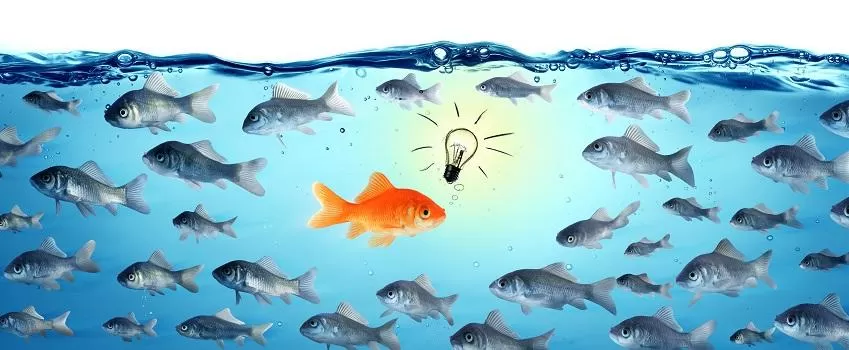Every one of the sample proposal write-ups below is selling the same widget. With minor edits, that widget could be a product, a service, or any other offering. The widget is not the point.
Good news and bad news
First the bad news: Even though they offer the exact same thing, your proposals should end up so different from each other that it doesn't even make sense to recycle the content. Now for the good news: Creating highly tailored proposals increases your competitiveness so much it is highly profitable.
Note how different each example is. The number of words that are the same in each writeup is practically nil. This is an excellent demonstration of the dangers of proposal reuse and starting from pre-written proposal content. Each customer has different concerns, and even if you’re selling the exact same widget, the proposal must be very different if you want to be competitive.
If you start from the same sample proposal every time, you will not achieve this level of customization and your win probability will drop. You may save a little time, but the cost of the reduced win rate will be orders of magnitude more than what it would have cost to prepare better proposals. Another way to look at this is that proposals should be treated as a profit center. If you invest in better proposals that increase your competitiveness, you will make more profit than if you don’t.
These examples also show why you can’t be everything to everybody, and why you will be far more competitive if you have even just a little insight into what concerns your customer. You can’t address all nine of these at the same time, and even if you could, the ones that matter to the customer would get lost in the noise. Besides, every customer articulates their concerns differently. Even if you had these 9 and 99 more like them ready to go, you’d need to reword them for every new proposal. If you don’t write your proposals to a specific customer, you are really just sending expensive brochures.
Examples of proposal writing
- Proposal to a customer concerned about quality: The reason our widgets are more effective is the way we design quality in from the beginning. We not only apply quality criteria to sampling and testing our widgets after they are made, but our design methodology uses those same quality criteria to create a manufacturing process that eliminates the source of most defects. The result is greater reliability, lower total cost of ownership, and customers who can focus on their mission and spend less time on widget maintenance.
- Proposal to a customer focused on experience: Our widgets are better [cite differentiators] because they benefit from all our experience with installing them at [identify customers like this one]. This experience enables us to anticipate the inherent project risks [identify them for better credibility]. Our [lessons learned methodology] enables us to deliver more value to our customers [better if defined]. Our approach transforms experience into action, which will have much more impact than empty claims of years of experience. This is important because an implementation without the vital lessons learned that our staff bring would be at risk of [negative outcomes].
- Proposal to a customer concerned about risk: We have identified and mitigated the risks associated with delivering the widgets to you by [insert differentiated approach]. We will also give you direct access to our widget tracking system so that you can see issues as they arise, monitor our timeliness in resolving them, know when we’ve escalated issues, and see how we’ve resolved them in real-time. Nothing will be hidden from you and you will be able to provide feedback and be as involved in the decision making as you choose to be. We will manage things just as if you are watching, even when you aren’t, because we will never know whether you are or are not. Because of this, you may not have to put as much effort into monitoring us in order to get the widgets you were promised, when you were promised them.
- Proposal to a customer focused on the staff: We will provide all the staff named in our proposal, all of whom are dedicated widget specialists. We do not expose you to the risk of us having to recruit the key staff needed to do the job. We know that it’s the people on the ground who will make this project successful, and not promises from the home office. We also have not included resumes that look good but are for staff you will never see, and our level of effort tables prove it. A contractor who does not provide level of effort commitments will be tempted to withhold their more experienced but expensive staff during performance. As a result, widget quality and performance will suffer. Our staff are not only fully qualified widget specialists, but they are also supported so they can be effective. Our people perform better because of the knowledge resources and best practice forums that we provide.
- Proposal to a customer with trust issues regarding vendors: While our past performance shows that we deliver as promised, it’s our approaches and transparent management that ensure you will get the widgets just they way we’ve promised them moving forward. These [provide differentiated examples] ensure that no step in the widget workflow can be overlooked or skipped and that every widget is fully functioning at or above specifications before they are delivered to you.
- Proposal to a customer who is happy with their current vendor: Our approach uses new [technology, approaches, etc.] to produce a better widget that will enable you to [insert example of better goal fulfillment]. Our approaches are proven to be low risk because we have already implemented them for other, similar clients. We have the people, processes, and tools to begin immediately with an approach that will enable you to pick up from the current state without any disruption and then raise the bar. The result will be a smooth transition that not only continues a reliable supply of widgets, but also [achieves benefits like lower costs, improved performance, time savings, etc.].
- Proposal to a customer concerned with compliance: [customer name] will be better able to [insert goal of procuring widgets] because our approach is based not only on fulfilling the specifications in the RFP, but on helping you to achieve your goals. [Exhibit/table] shows that our widget meets or exceeds every specification. In addition, because our widget also complies with [insert other relevant standards, rules, laws, etc.] you will be able to confidently rely on our widgets. Widgets that do not meet these additional standards will not only represent a compliance risk, but they will also ultimately cost more than our widgets due to lower performance and reliability.
- Proposal to a customer concerned about widget performance: The increase in performance that results from using our widgets will [Lower cost? Improve results? Save time? Other benefit?]. We achieve better performance by [differentiated process] that [delivers benefits]. When widgets aren’t produced this way [describe how disaster may ensue].
- Proposal to President Trump: It’s a great widget. We only sell the very best widgets. Anyone who says they are not the greatest is Fake News. People love our widgets.
Recycling and automated assembly are dangerous and will cost you more than doing it right
How well do you think a recycled widget write-up from a previous proposal would stack up in competition? Anything you copy and paste from a past proposal will have been written for the wrong context and show that you are out of touch with the new customer's concerns. What would the win probability of any one of these be if given to any of the other customers?
It is better to focus on competitiveness than on reuse and assembly. More proposals produced faster but less competitively will not lead to growth. Instead of focusing on proposal assembly, focus on differentiation that better addresses customer concerns. I hope my competitors all recycle their narratives and automate their proposal assembly. Because I won’t.



Let's discuss it!
You can post now and register later. If you have an account, sign in now to post with your account.
Note: Your post will require moderator approval before it will be visible.